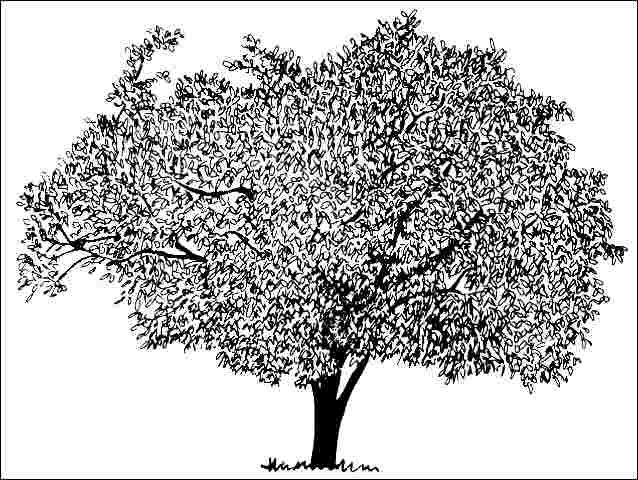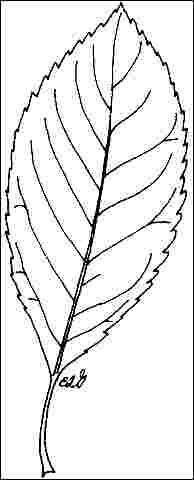Introduction
Two-Winged Silverbell is a wonderful, small, deciduous native tree, reaching 20 to 30 feet in height, with a fairly dense, rounded silhouette when grown in the full sun. In its native habitat as an understory tree along stream banks it appears more open. Branches grow from the base of the tree forming a multi-trunked tree suited for specimen or patio planting. Although native to the deep south, it is, unfortunately, known little and not grown by many nurseries. In springtime, the trees produce a multitude of beautiful, showy, bell-shaped white flowers which are followed by two-winged, 1.5 to 2-inch-long drupes.

General Information
Scientific name: Halesia diptera
Pronunciation: hal-EE-zhee-uh DIP-ter-uh
Common name(s): Two-Winged Silverbell, Snowdrop Tree
Family: Styracaceae
USDA hardiness zones: 5A through 8B (Fig. 2)
Origin: native to North America
Invasive potential: little invasive potential
Uses: sidewalk cutout (tree pit); tree lawn 3-4 feet wide; tree lawn 4-6 feet wide; tree lawn > 6 ft wide; specimen; deck or patio; container or planter
Availability: not native to North America

Description
Height: 20 to 30 feet
Spread: 20 to 30 feet
Crown uniformity: irregular
Crown shape: round, vase
Crown density: moderate
Growth rate: moderate
Texture: medium
Foliage
Leaf arrangement: alternate (Fig. 3)
Leaf type: simple
Leaf margin: serrate
Leaf shape: elliptic (oval), obovate
Leaf venation: pinnate
Leaf type and persistence: deciduous
Leaf blade length: 2 to 4 inches, 4 to 8 inches
Leaf color: green
Fall color: no color change
Fall characteristic: not showy

Flower
Flower color: white/cream/gray
Flower characteristics: very showy
Fruit
Fruit shape: oval
Fruit length: 1 to 3 inches
Fruit covering: dry or hard
Fruit color: yellow
Fruit characteristics: attracts birds; showy; fruit/leaves not a litter problem
Trunk and Branches
Trunk/bark/branches: branches droop; not showy; typically multi-trunked; thorns
Pruning requirement: needed for strong structure
Breakage: resistant
Current year twig color: brown
Current year twig thickness: thin
Wood specific gravity: unknown
Culture
Light requirement: partial sun or partial shade, shade tolerant, full sun
Soil tolerances: clay; sand; loam; acidic; slightly alkaline; well-drained; occasionally wet
Drought tolerance: moderate
Aerosol salt tolerance: unknown
Other
Roots: not a problem
Winter interest: no
Outstanding tree: yes
Ozone sensitivity: unknown
Verticillium wilt susceptibility: unknown
Pest resistance: free of serious pests and diseases
Use and Management
Two-Winged Silverbell is slowly gaining in popularity for landscape use, and is ideal for naturalizing in locations with moist soil. It is not drought-tolerant and should always be located in a protected spot sheltered from full day sun and wind. Grows best with mulch beneath the entire canopy. It makes a nice addition to the shaded shrub border with its spring flower display and creates an excellent understory tree beneath large natives. Use it as you would Flowering Dogwood. Also used as a patio tree for creating shade in a small, residential landscape. Not a tree for planting in the open or along a street.
Two-Winged Silverbell should be located in partial shade on very well-drained acid soil where leaf litter and mulch are allowed to accumulate. It grows in full sun in the north, adapts to almost total shade. It is not adapted to clay.
Variety magniflora has larger flowers and is a vigorous grower in the South.
Propagation is by seed.
Pests and Diseases
No pests or diseases are of major concern. It is amazingly pest free.